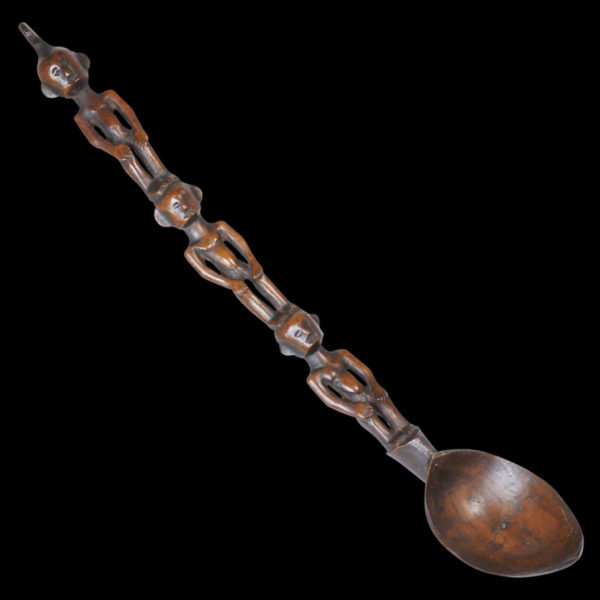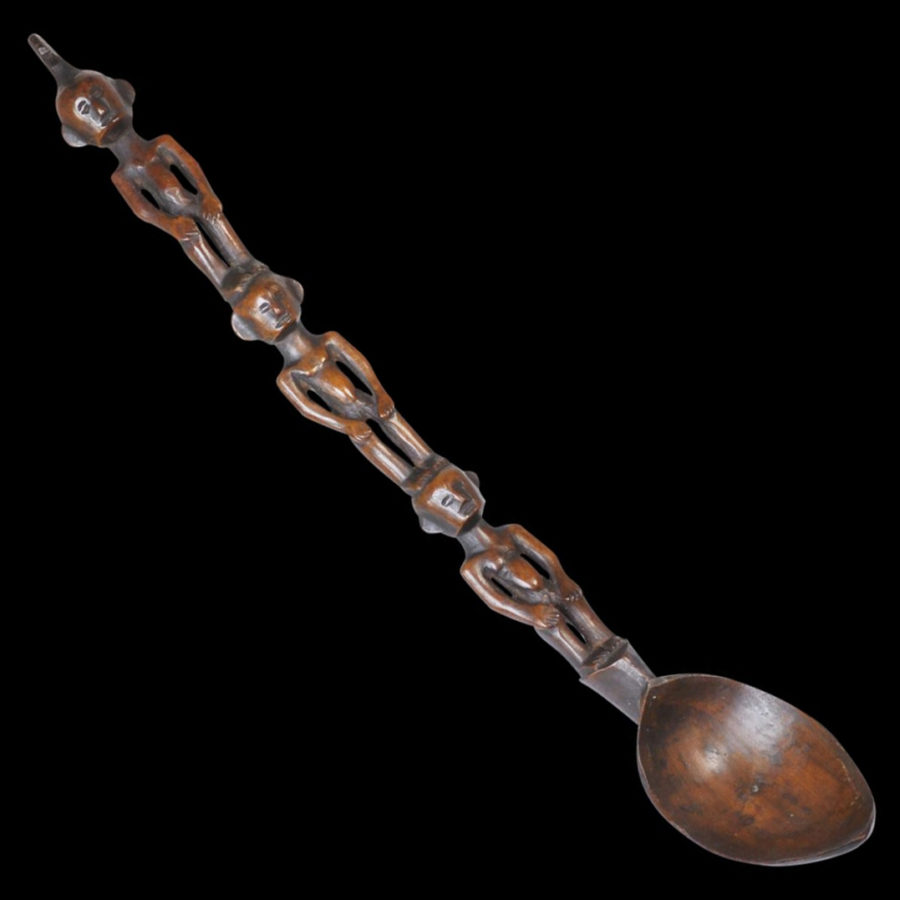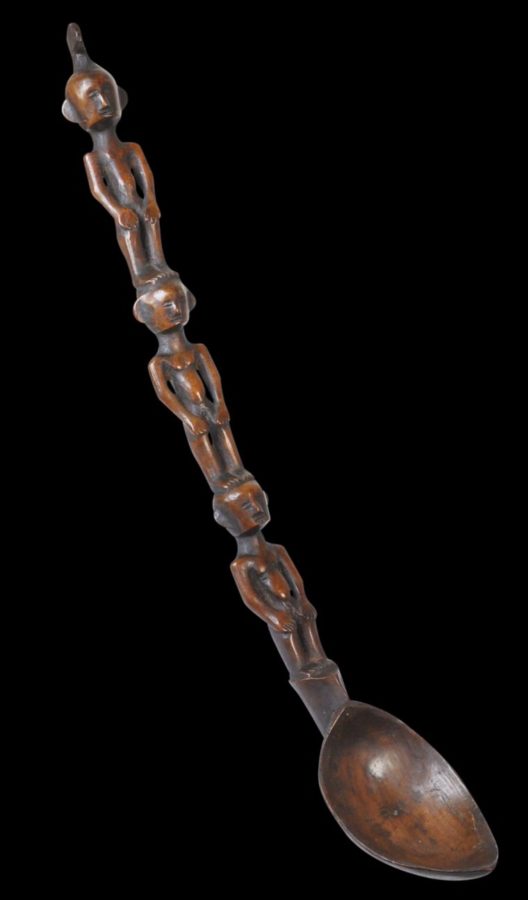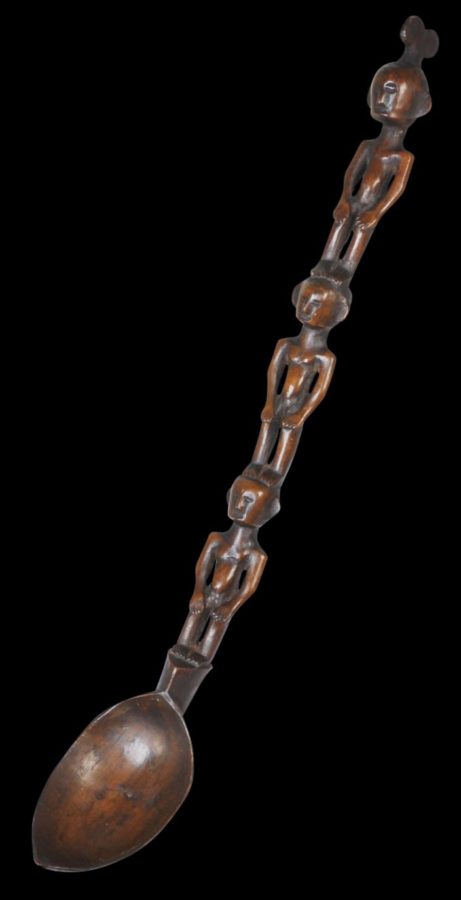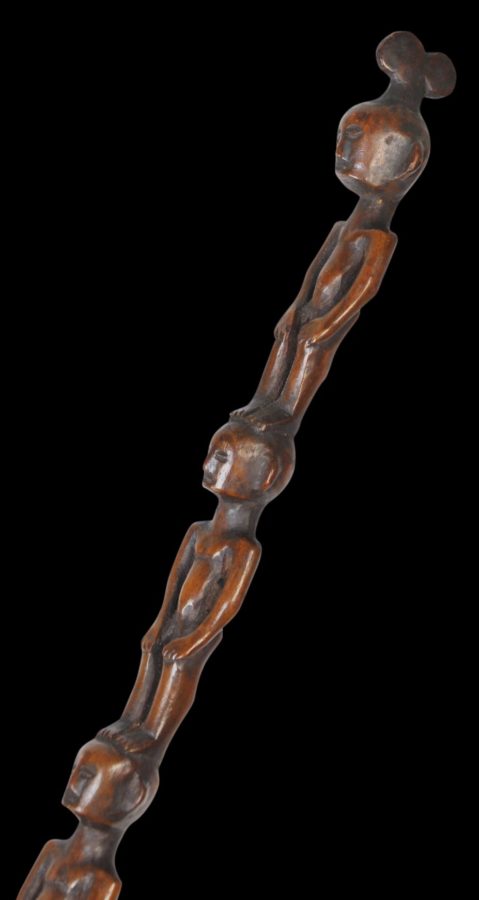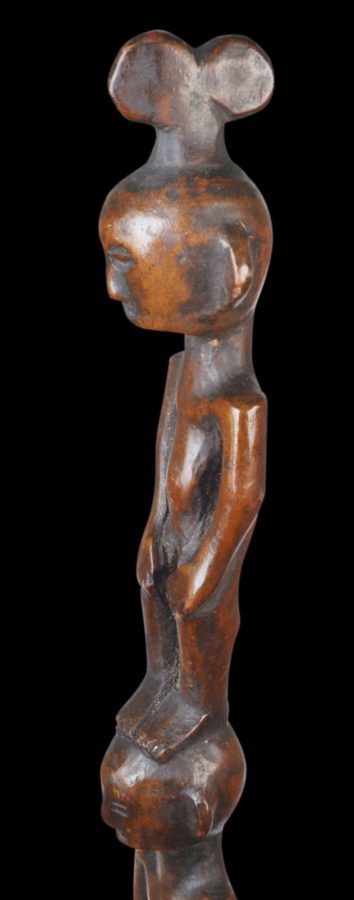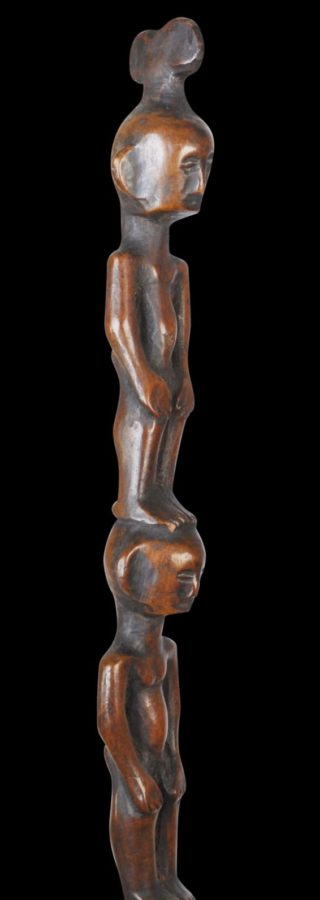Carved, wooden spoons are integral to traditional ceremonial culture of the Ifugao people of Luzon island in the northern Philippines. Most are carved with one figure as a handle and sometimes two figures, one atop the other, are encountered.
This example, however, is exceptionally rare – it is the only example of which we are aware, published or otherwise, that has three figures. It also has splendid patina and a deep, lustrous surface.
It comprises a bowl which comes to a point and three, well-carved human figures, one standing atop another, all seemingly naked but with the final figure sporting a typical headdress. Each figure has been carved with the hands resting on the thighs. The muscular contours of each figure are well delineated. The ears, buttocks, noses, fingers and toes also are clearly depicted.
A large, important collection of these spoons is held in the Oriental Museum in Valladolid, Spain, in the Royal College of the Augustinian Fathers, and founded in 1874. Many of the Museum’s spoons were acquired around that time new by the Augustinians in the Philippines. They were sent to the Vatican for exhibition and thereafter were sent back to the Royal College. As such, these spoons have excellent and well-chronicled provenance. The spoons in the Oriental Museum have similarly-shaped bowls with a pointed tip, as our example, and several have handles carved with one figure atop another. These were collected by Padre Benigno Fernandez in Luzon between 1876 and 1880. Several are illustrated in Sierra de la Calle (2004, p. 40). Spoons from this period often were commissioned from indigenous carvers.
Moltzau Anderson (2010, p. 220) illustrates a figurative spoon with two figures, one atop the other, that has the same patina, bowl shape and style of carving as the spoon here. Both could we be by the same carver. The published example is attributed to Hapao, and was collected prior to 1898.
Such figurative spoons were used by the Ifugao and Bontoc peoples of northern Luzon in the Philippines for ritual purposes. The spoons were handled on a daily basis and were kept in an open basket above the hearth in the family home. Such handling and storage accounts for the deep patina that some have developed. (Those in Valladolid’s Oriental Museum have very little patina as they were likely acquired new in the 1870s.)
The spoons were regarded as heirloom items and imbued with talismanic properties. Accordingly, warriors, when attacking and raiding rival villages, would take the spoons among other ‘war’ booty, and would cut off the figurative handles from the spoons and attach them to armbands known as tangka or tangkil or wear them as charms.
The example here is accompanied by a high-quality, custom-made stand.
References
Afable, P., et al, Philippines: an Archipelago of Exchange, ACTES SUD/ Musee du Quai Branly, 2013.
Barados, D., Land of the Morning: Treasures of the Philippines, San Francisco Craft & Folk Museum, 1995.
Gomez-Garcia, P., ‘Northern Philippine primitive wooden art’, Arts of Asia, July-August 1983.
Moltzau Anderson, E., In the Shape of Tradition: Indigenous Art of the Northern Philippines, C. Zwartenkot Art Books, 2010.
Schoffel, A., Arts Primitifs de l’Asie du Sud-Est (Assam, Sumatra, Borneo, Philippines): Collection Alain Schoffel, Alain et Francoise Chaffin, 1981.
Sierra de la Calle, B., Filipinas: Obras Selectas del Museo Oriental, Museo Oriental – Valladolid, 2004.


